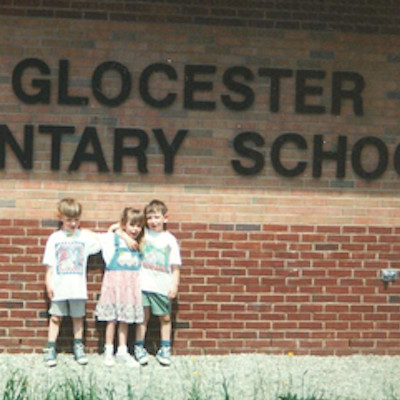Developing Rhode Island’s Business Ecosystem
Monday, March 03, 2014
This week, GoLocalProv investigates the fourth of five major themes from Economic Intersections of Rhode Island , a private-sector generated report that outlines collaborative solutions to jumpstart the Rhode Island economy. Written based on the input, recommendations and work of more than 200 professionals from across all sectors of the Rhode Island economy, this report examines the most creative, bold and exciting new industries that will help to get the Ocean State back on its feet.
“Building Capacity and the Business Ecosystem”
In order to succeed, businesses depend on an entire ecosystem of resources in place that allows them to flourish. “ Building Capacity and the Business Ecosystem,” identifies what the report’s teams of participants pointed to as the pieces of the economic ecosystem that most need to be invigorated in Rhode Island to help businesses grow: capital, regulations, logistics, and technical assistance. With these areas in mind, “Building Capacity” lays out how best to go about bolstering and coordinating the things that all businesses in our state depend on.
GET THE LATEST BREAKING NEWS HERE -- SIGN UP FOR GOLOCAL FREE DAILY EBLASTIncrease Logistics and Export Assistance
While 48% of U.S. GDP growth was driven by exports in 2012, Economic Intersection participants said that Rhode Island is among the least well-funded states in terms of supporting export capacity. Rhode Island is replete with shipping companies, as well as manufacturers. Increasing the capacity of both—and making sure that they are able to coordinate—will ensure that local businesses are able to take advantage of the lucrative market outside Rhode Island for goods produced within this state.
In order to expand on Rhode Island’s export capacity, Economic Intersections recommends specific proposals like creating a ShipRI App to make businesses aware of local port, rail and trucking companies, and the formation of an independent Shipping Alliance to combine shipping sizes for small and medium sized companies and sign contracts with ocean shipping lines directly on their behalves. Additionally, the report urges an increased coordination between city and state governments and logistics stakeholders to work on issues like congestion in Providence, weight restrictions on Massachusetts bridges, and hazardous material transportation.
Address Rhode Island’s Capital Gap
Equity and investments are critical to new companies struggling to get off the ground, and its been identified as an area in which Rhode Island suffers a lack of resources. To address this problem, Economic Intersections recommends that a group of private and public sector leaders convene to establish a “Fund for Rhode Island’s Future.” This fund would be modeled on private-public funding mechanisms that already exist in other states. This Fund would create independently managed pools of capital to invest in crucial businesses around the state within the sectors that most stimulate growth throughout the Rhode Island economy as a whole.
There are a number of options for how such a fund could best reach private businesses. The two most common options would be either to use state controlled funds to invest in a private equity fund contingent upon $3 to $1 match or the greater of private funds, or to provide matching funds to companies that secure private-sector investment. The Fund for RI’s Future would track the results of the investments through a transparent structure that measures economic resonance and benchmarks Rhode Island’s achievements against those of other states.
“Create New Mechanisms and Support Systems for Providing Capital to High-Opportunity Affinity Groups”
During the discussions that led to the creation of Economic Intersections, the report’s writers found that there were certain sectors of the economy which were not able to take full advantage of loan products already in the market place because of the underwriting requirements those products entail. The three segments of industry most effected were minority-owned businesses, the creative and cultural economy, and agriculture and aquaculture industries.
To address the needs of minority-owned businesses, Economic Intersections urges the creation of a community-based specialized financial institution that would work with emerging minority markets. With Rhode Island’s African-American and Asian-American populations growing by a respective 23 and 28 percent over the past decade, and Latino-owned businesses seeing an explosion in revenues to the tune of almost half a billion dollars, investment in minority-owned businesses will only pay bigger and bigger dividends as the state looks towards the future.
Economic Intersections also supports the creation of a Cultural Facilities Fund to strengthen the creative industries which generate over $324 million annually within Rhode Island. This funding mechanism, which already is built into the Governor’s proposed 2015 budget, would help cultural businesses to flourish all over Rhode Island that will create revenue, jobs, and can help to add value to mature businesses of all kinds as well.
The needs of the agri- and aquaculture industries are threefold. These businesses partner with regional banks and investors, provide low-interest loans for capital investments within these industries, and support succession planning. These sectors combine for a whopping $1.78 billion annually in revenue and an estimated jobs total of over 12,000.
“Enhance Technical Assistance and Industry Support Organization Capacity to Facilitate Job Growth for Small Businesses”
According to the U.S. Small Business Administration, small businesses represented 95.9 percent of all employers in Rhode Island in 2010, employing 55.4 percent of the private-sector labor force. Doing as much as possible to ensure these businesses’ success is critical to the state’s economy.
Small businesses need to work collaboratively in order to succeed. Economic Intersections notes the abundance of long-standing industry associations within the state, which, given better coordination and resources, could be a crucial ally for small businesses. In addition to industry associations, a program has begun to pair aspiring business owners with current owners without succession plans to help emerging and established small businesses to identify and realize new opportunities.
The report also contains recommendations for making the collaboration between small businesses and technical assistance organizations as economically beneficial as possible. To do so, technical service providers must increase their “cultural competency” when relating to small businesses. Ultimately, those technical service providers which can best demonstrate the ability to help their clients secure small business loans could be rewarded with promotion or greater amounts of funding.
"As a recognized leading lender to small businesses, BankRI is acutely aware of their importance to the success of the Rhode Island economy," stated BankRI's Director of Commercial Banking, Will Tsonos. "Coordinating and rewarding technical assistance organizations will laser focus their resources to ensure Small businesses and the organizations succeed."
Support Regulatory Reform Efforts
There is wide industry support for the Office of Regulatory Reform (ORR), the state office charged with reviewing agency regulations that adversely impact small businesses, from amongst the businesspeople who participated in Economic Intersections. Many of those professionals repeated frustration in their attempts to deal with state and local regulators.
There are several potential steps to take that would help businesses navigate these regulatory environs. These steps include replicating the ORR on a local level, reviewing local as well as state regulatory legislation. Businesses would also be well served by more consistent processes for municipal zoning and permitting, in addition to implementing e-government service. To help businesses that feel caught in a web of regulation, business specific ombudsmen should be put in place to liaison between industries and the agencies of local government that oversee them. These steps would better help businesses to understand their place within the regulation landscape, and to help them expand while never violating state or local mandates.
"Difficulties of local businesses navigating the vast array of municipal, state and federal regulations have been well documented," said Tsonos. "Any independent resource that helps local companies shift through regulatory hurdles will only help to improve Rhode Island's economy in the long-term."
This column is part of an ongoing sponsored content series with BankRI.
Related Slideshow: Rhode Island’s Most Unemployed Cities and Towns
Below are the unemployment rates for Rhode Island's 39 cities and towns from August 2013.
The statewide average for the month was 9.1% -- the third highest rate in the country.
Related Articles
- CITY/STATE: Three Economic Big Ideas For Rhode Island
- NEW: Chafee Announces Next Step in Plan to Maximize Economic Strengths
- RI’s Changing Demographics – An Economic Opportunity
- Chafee’s Budget: Economic Development and Job Creation
- NEW: Fox and Raimondo Team Up on Legislation on “Economic Growth”
- Russell Moore: Chafee Should Pursue Bold Economic Reforms
- Does Rhode Island Have a Clear Strategy for Economic Development?
- NEW: Lardaro Report: Good + Bad News for RI’s Economic Performance
- Russell Moore: Gambling is an Economic Development
- Emerging Industries That Can Catalyze RI Economic Development
- NEW: Prov City Council Calls for Economic Development Task Force
- Russell Moore: Rhode Island Needs An Economic Overhaul, Not A Tweak
- Aaron Regunberg: Walmart Organizing Could Represent New Economic Era
- Fox’s Rival Calls for New Economic Model
- Providence Ranked 94th Out of 102 Cities for Economic Ranking
- URI’s Mazze on Economic Forecast: Two Steps Forward, One Step Back
- Aaron Regunberg: Want Economic Development? Raise the Minimum Wage
- Lardaro Report: RI Economic Performance is Moving Forward, Slowly
- RI Housing Market Showed Signs of Solid Economic Recovery in 2013
- All Cuts And No Revenues Define RI’s 3 Economic Plans
- Lardaro Report: Rhode Island’s Economic Rate of Growth Slowing
- RI State Report: Unemployment, Gay Marriage & Fox’s Economic Plan
- CITY/STATE: Some Legitimately Good Economic News For Rhode Island
- Lisa Blais: RI’s Economic Assault On Average Taxpayers











